Our man Alan Dowds spent a few weeks on the new Suzuki V-Strom 800 RE earlier this summer – including a mega-tour to the west of Scotland. Here’s how he got on…
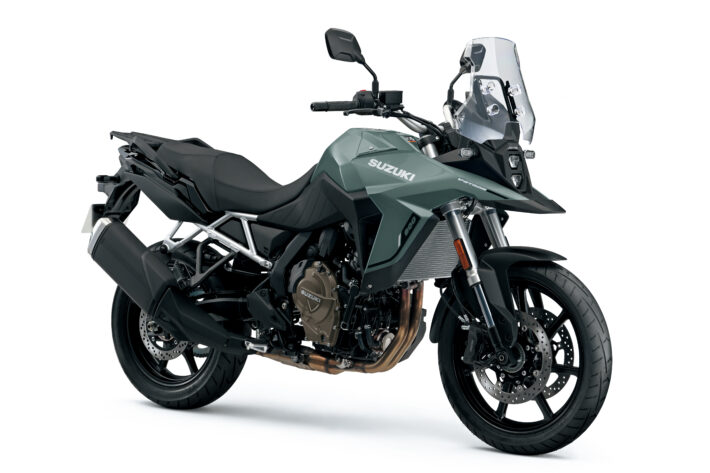
I’m an economic migrant. I grew up in one of the old shipbuilding towns on the River Clyde in the 1970s and 80s, as that heavy marine engineering was finally dying out. And in the late 1990s, I ended up making the journey south for a job as a bike journalist, first in the East Midlands, then in south London.
I’ve still got family, friends, and deep roots in Scotland though, and spend a fair bit of time up there. I’ve made the journey by just about every possible means: bus, train, van, plane, car – and, of course motorbike.
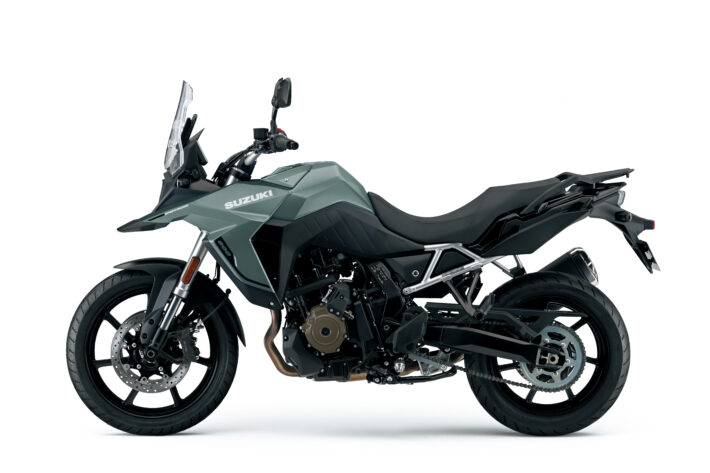
None of them are great: it’s 450 miles from my door to where I grew up, and that’s a weird distance. It’s not quite far enough to justify a two-day trip I reckon, but is just enough to make a one-day hit a bit miserable, especially if you hit traffic. Going with the family works best with the train or car.
But for a solo trip, a motorbike just about makes sense. You can rule out the worst of the traffic problems: you’ll always be able to filter through jams in the West Midlands and Staffordshire. And when you arrive in Scotland, you have a motorbike to make the most of the amazing roads…
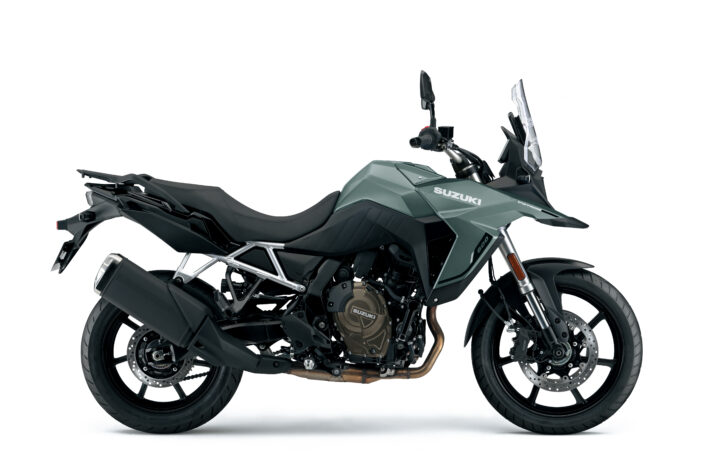
So when I snaffled a ride on the 2024 Suzuki V-Strom 800 RE for a couple of weeks, I began hatching a plan to take the smart new upper-middleweight adventure tourer on a trip north. Going from my current home to my childhood home perhaps wouldn’t be super-adventurous of course, but I’d say that a 900-mile round trip, with plenty of extra outings in the middle, counts most definitely as a tour.
A bit of organising, some soft luggage out of the garage, and an old Hepco and Becker top box affixed to the standard rack on the Suzuki, and I was all set.
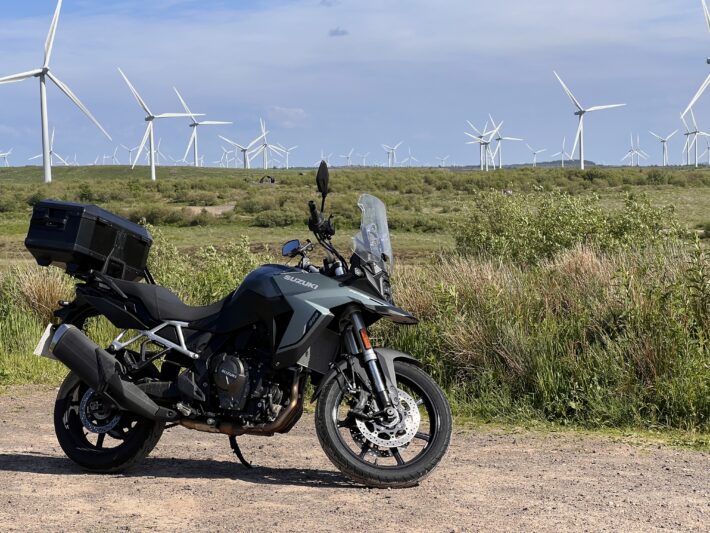
The V-Strom 800 first appeared last year, to no small success. It was the first outing for the firm’s latest parallel twin engine design, which has revived fortunes for the firm, both in the adventure touring class, and the naked and sportsbike sectors.
The GSX-8R and GSX-8S have done well, but it’s in the V-Strom that the engine has made perhaps the biggest impact. There are some absolutely brilliant machines in that class, and for the new 800 to duke it out with the likes of the BMW F850/900 GS, KTM Adventure 890 and new Honda Transalp is a great achievement.
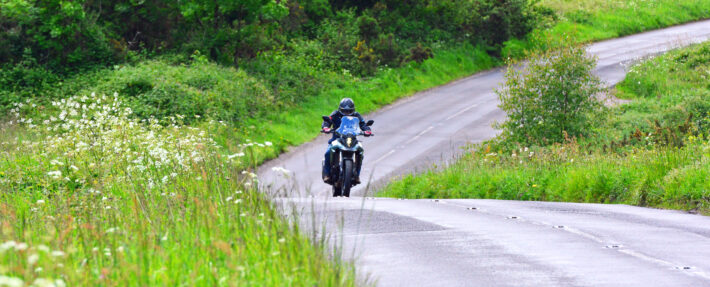
And for 2024 the Japanese firm extended the 800 V-Strom line-up with this, the RE or Road Explorer version. It’s a fairly comprehensive update to be fair: you get cast wheels with tubeless road rubber in road sizes instead of wire-spoked tubed dirt wheels and tyres.
The front wheel is a 19-incher down from 21”, and the brakes use a pair of more powerful radial-mount four-piston calipers instead of axial-mount twin-potters. The suspension has less travel, with road features like a remote rear preload adjuster, and the seat height is 30mm lower.
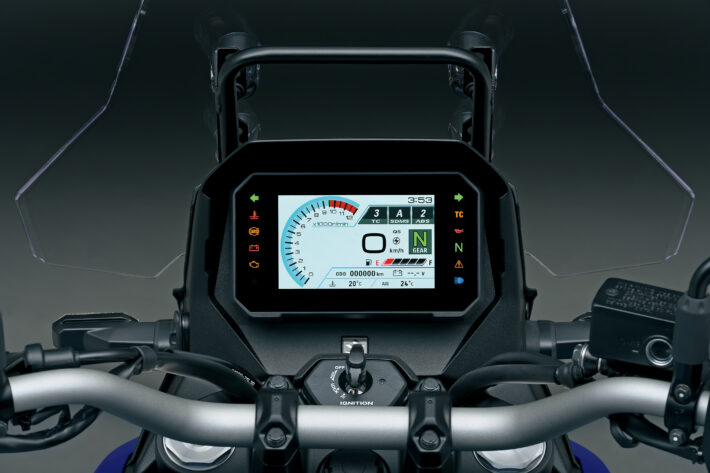
There’s a load of other detail mods too: aluminium rubberised footpegs instead of tougher steel parts, narrower handlebars, an adjustable touring screen (which I’ve fixed in its highest of three positions for the trip) and different mudguard.
It all adds up to a solid upgrade of the V-Strom’s road-going credentials compared with the DE dirt version.
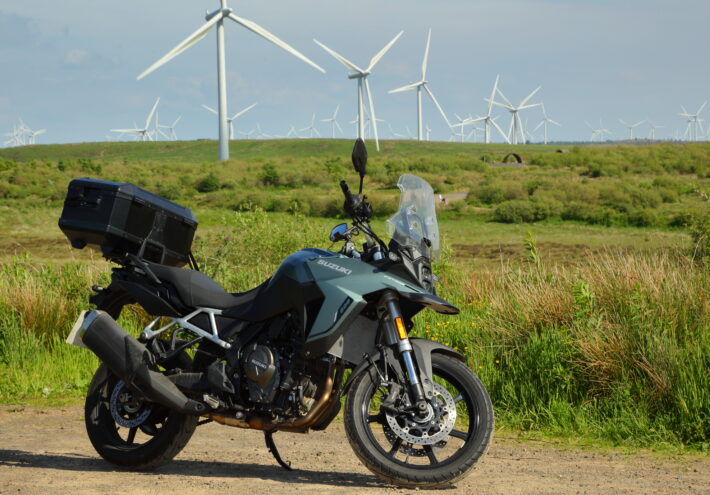
Which is just as well, because I’m about to hit the road – and a lot of it. Sadly, much of it will be The Dullest Tarmac In BritainTM – the M25/M40/M42/M6/M74 nexus of misery. For this trip from London to Glasgow, you’re caught between a rock and a hard place.
Go on nice, twisty, interesting roads and it’ll take two days. You’ll need a sleep at some point. Go on the nasty smelly motorways and you’ll be there in under eight hours, easily, with minimal fuss but maximum ennui. Smelly motorways it is.
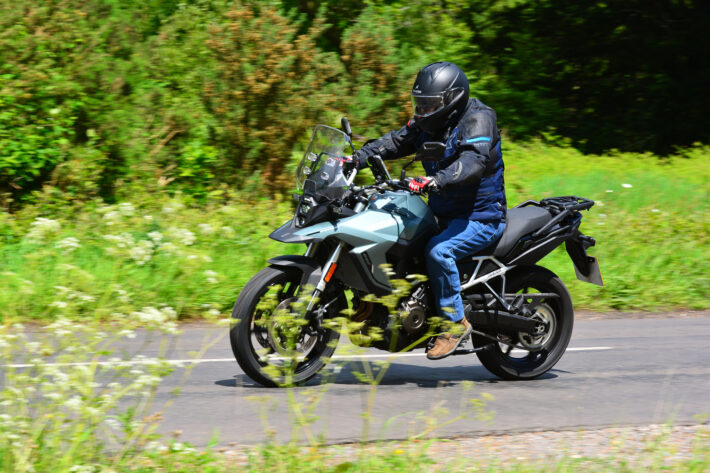
The V-Strom sways a little as I pull out of my drive, creaking under the weight of a fortnight’s luggage, extra locks, laptop and camera gear for a job I have to do en route. But she steadies away down the A3, and I settle in for the day. It’s a well-appointed perch in fact: a large colour dash is telling me much of what I need to know.
My iPhone in its Ultimate Addons mount is plugged into the standard USB charging socket, with Google Maps supplying the rest of the essential facts. Spotify is piping tunes into my helmet via the Sena 50c intercom on my Shark Evo One lid, the 20 litre fuel tank is brimmed, and the sun has even popped out. Woo!
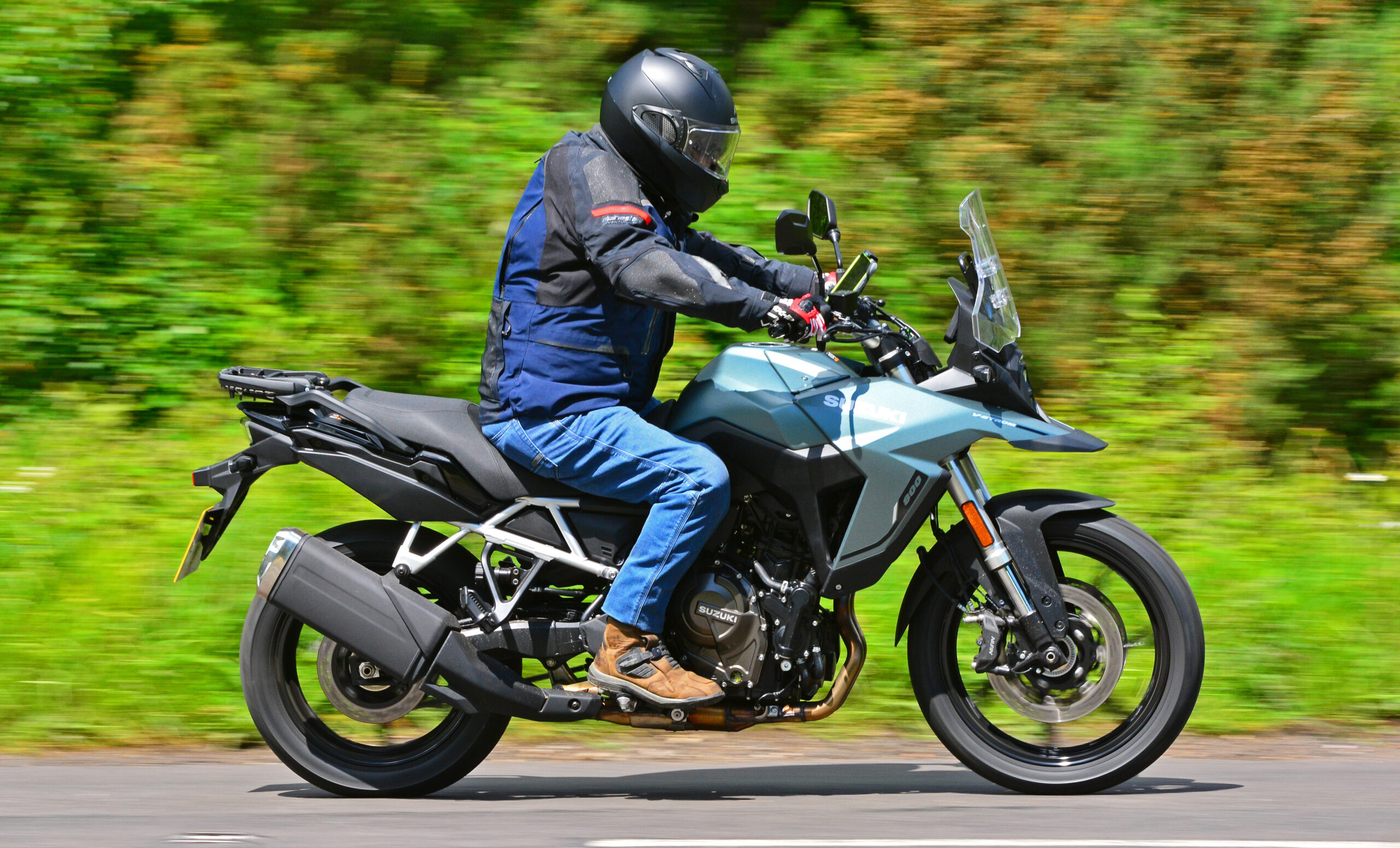
That new engine is impressing me a lot too. I’ve already spent a hundred-odd miles on it, riding it back from Suzuki HQ in Milton Keynes, and pottering about for pics locally. It is, in theory, the same engine as on the GSX-8R and GSX-8S I rode the month before, but something about it feels gruntier.
It’s maybe a gearing thing, or an illusion created by the physically-larger bike you’re sat on. But it’s a really satisfying, torquey power delivery, and perfect for this type of bike.
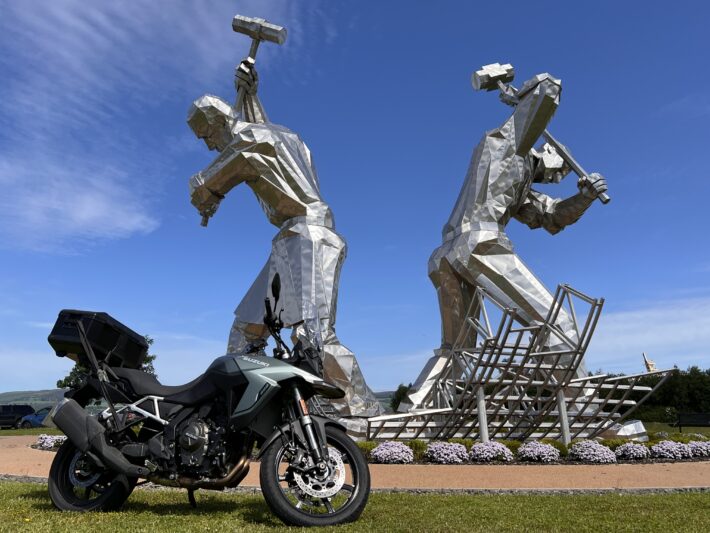
I used to think that middleweight twins didn’t quite have the long-legged nature of a big four for long-distance machines, but this Suzuki unit feels very reassuring, and you feel like you could ride this bike to the end of the country with no grief at all.
It’s smooth, the fuelling is spot-on, and in the usual 60-85mph motorway speed zone, you don’t really need to change down a gear or two (though it’s always more fun when you do).
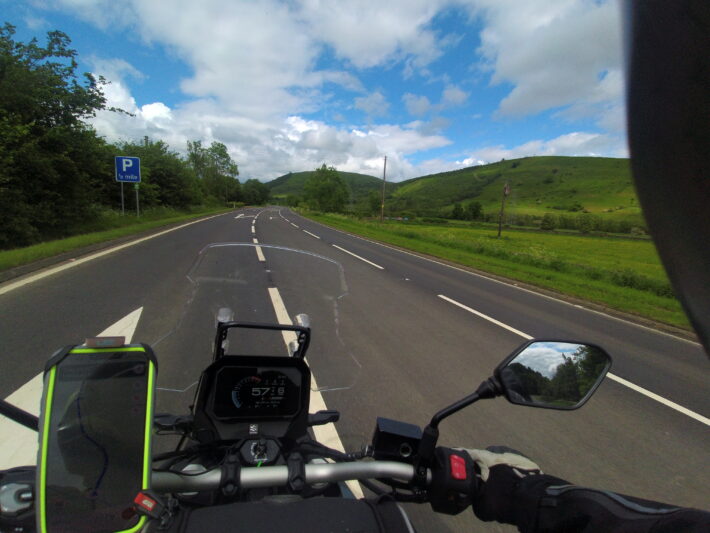
There’s one big miss though: no cruise control, which really does feel like a cost-cutting move too far. You can’t beat a computerised throttle-jockey on long trips, especially for the long, hateful 50mph average speed zones which have peppered the UK like Covid-19 hot spots in winter 2020.
If Suzuki doesn’t offer a neat cruise button on all the 800s, at least as an option in 2025, then there clearly is no god and Satan has won the battle for this civilisation, booh.
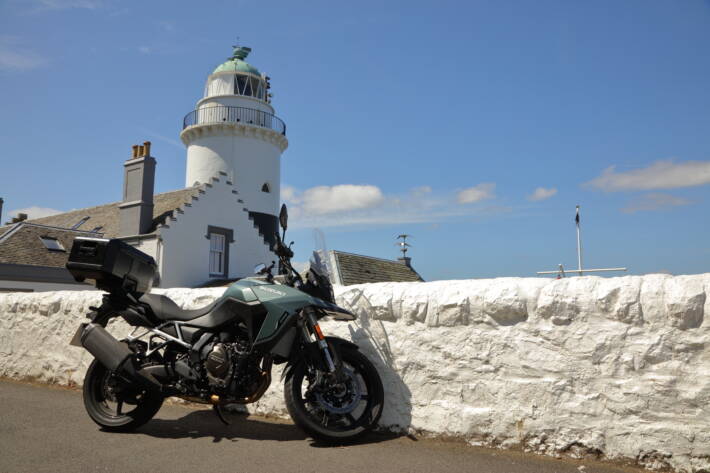
On a trip like this, my brain goes into a sort of trip-computer fugue, where it constantly computes the range remaining, fuel consumption, speed, and the last ‘Distance to Services’ sign I can remember. It’s a weird sort of semi-autistic loop, with the aim of getting the absolute optimal fuel stop strategy.
The Vulcan bombers and Victor tankers that flew to the Falklands in 1982 probably put less thought into their fuelling than I always do on the stretch of motorway between the A3 and the M6 Toll.
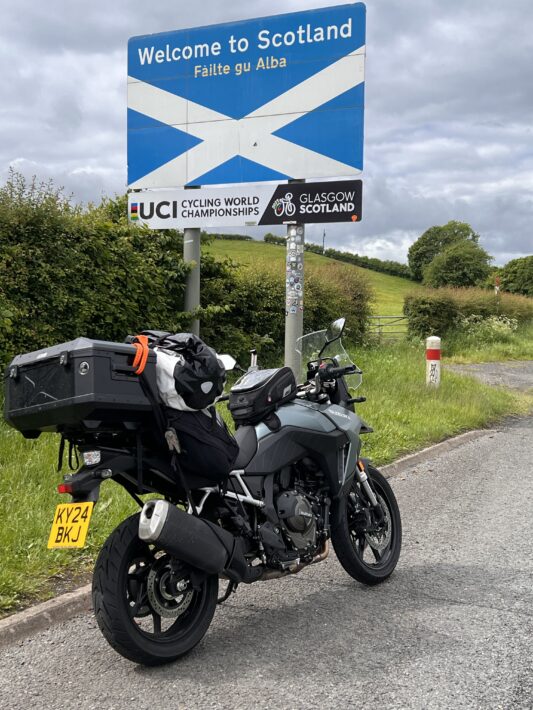
One thing that’s helping here is the decent fuel consumption of the 800. Like almost all modern bikes, if you keep the throttle steady, 50+mpg is easy to get, even at sensible motorway pace.
If you start to go a bit daft, then things plummet of course, but as it is, I’m easily able to press on past Birmingham for my first fuel stop, the 20-litre tank and range countdown keeping me confident until Keele Services, nearly 200 miles from home. Tank range is VERY DULL STUFF of course – but a crucial part of any distance machine I reckon, and saves proper time on longer trips.
By comparison, when I did the same trip on a BMW R18 last year I needed three stops: the 120-ish mile range and no proper fuel gauge/range readout keeping me on edge the whole time.
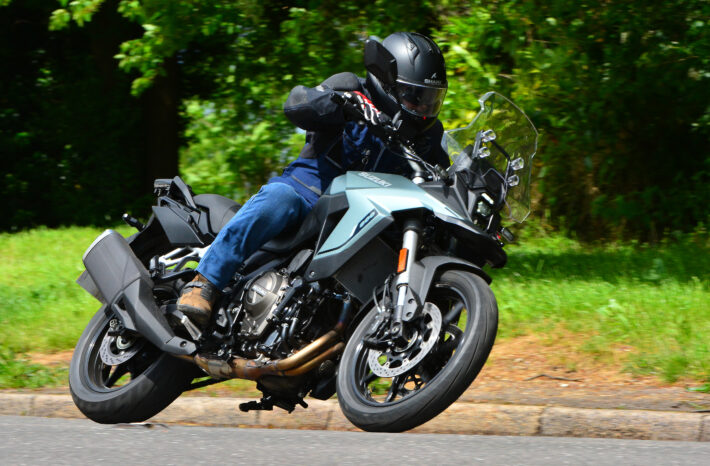
The broader M6 dullness ends in another 150 miles though – I’ve planned in a visit to an old friend in the Borders en route to Glasgow. So I pull off the M74 just after Carlisle and take the incredible A7 to Hawick.
This is one of the really great Scottish roads, despite its trunk status, and it’s made for bikes. It’s single carriageway almost all the way, so you really need two wheels for overtaking slow trucks, tractors and dawdling tourists.
The scenery is as good as you’ll get without hitting the proper Highlands, and there are picturesque little towns and villages all the way to Edinburgh.
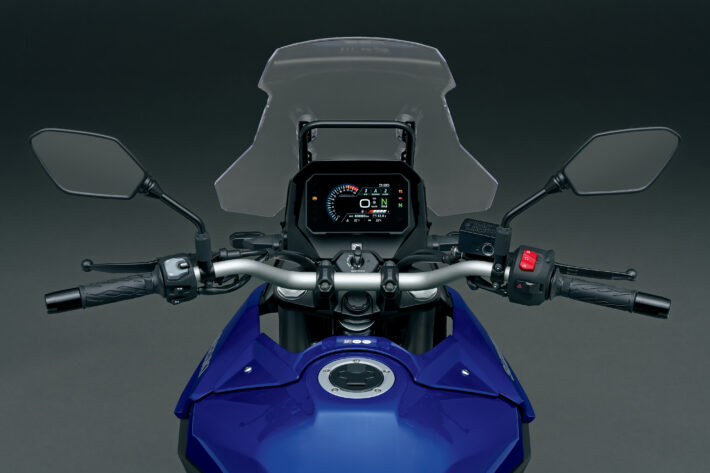
The V-Strom is doing very good work now. Freed from the motorway monotony, the solid handling, commanding riding position and torquey engine all come into play. Dancing through the gearbox with the excellent up and down quickshifter enhances the sporty feel, and since much of the traffic is going quite slowly, you can easily, quickly and safely overtake it.
Kick down a couple of cogs, wind on the gas and slingshot past a line of cars, all fuming behind a fully-loaded tipper truck or gently swaying Italian-registered motorhome. I’ve got my destination on Google Maps as a car journey, and the amount of time saved by being on a bike is stunning.
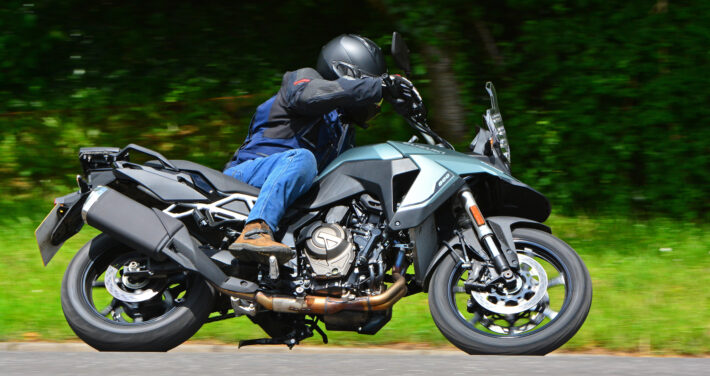
That only gets more impressive later on when I take the sclerotic M8 motorway from Edinburgh to Glasgow: overtaking and filtering gets me back an easy 45 minutes on the trip.
Over the next couple of weeks, the weather is decent up here, and the V-Strom is my trusty sidekick for visiting family and old chums around Greenock, Glasgow and the west of Scotland.
Long before the trip back home to London, I’ve already grown very fond of it. It reminds me a bit of the Kawasaki Versys 650: fairly unassuming, with nothing outlandish on the spec sheet, but simply a very good, satisfying bike to ride.
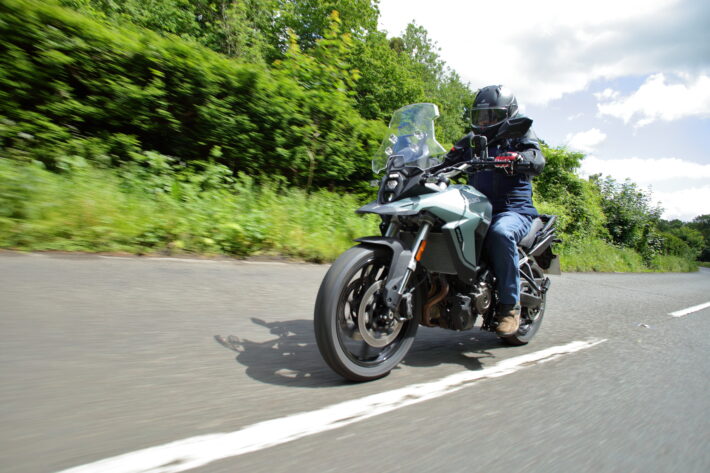
The Suzuki adds an extra dollop of performance and tech over the slightly aging middleweight Versys of course, but it’s got that same capable, friendly, easy feel to it, which must be a big part of its critical and sales success.
Suzuki’s done well on the pricing as well: the V-Strom 800 RE starts at just £9,699, with the touring version that comes with a full set of official aluminium hard luggage for £11,199. So, if you’re a bit of an economic migrant from the £15k+ adventure machinery that seems to be taking over the sector, then it might just be the ideal solution for you…
Photo Credit – John Goodman
Suzuki V-Strom 800 RE SPECS
Price: £9,699
Engine: DOHC 8v, parallel twin, l/c, 776cc, 270° crank
Bore x stroke: 84x70mm
Compression ratio: 12.8:1
Carburation: ride-by-wire fuel injection, 52mm throttle bodies
Max power (claimed) 84hp@8,500rpm
Max torque (claimed) 78Nm @6,800rpm
Transmission: six speed gearbox, wet slipper clutch, chain final drive
Frame: steel tube trellis
Front suspension: USD Showa Big Piston forks
Rear suspension: Dual-sided swingarm, preload/rebound-adjustable monoshock, remote manual preload adjuster
Brakes: twin 310mm discs, four-piston radial-mount calipers (front), 260mm disc, single-piston caliper (rear), ABS
Wheels/tyres: cast aluminium/Dunlop D614 110/80 19 front, 150/70 17 rear
Rake/trail: na°/na
Wheelbase: 1,515mm
Seat height: 825mm
Kerb weight : 223kg
Fuel capacity: 20 litres
Electronics: 5” TFT, USB charging socket, LED headlight, traction control, rider power modes, up/down quickshifter.